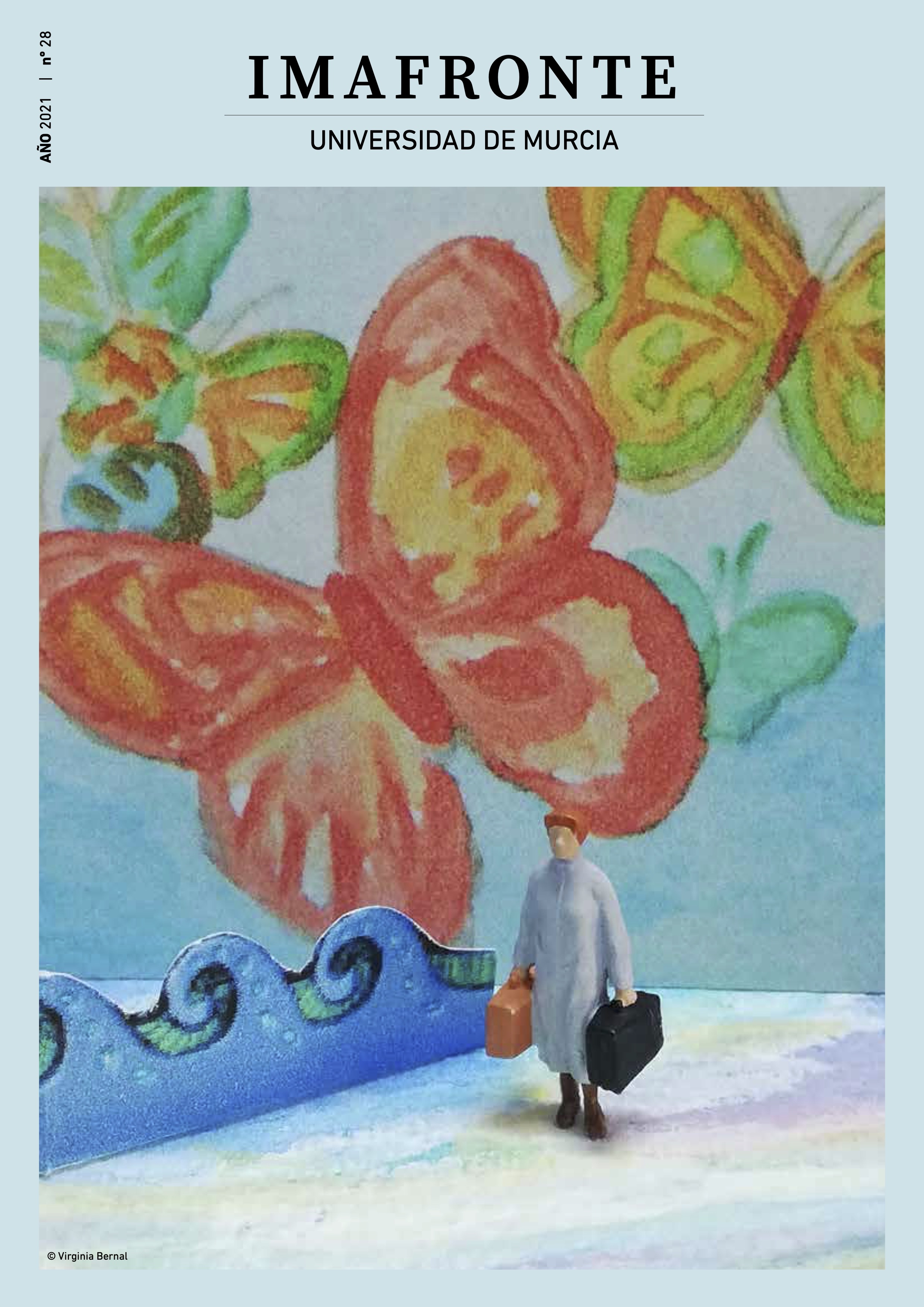Images, silverware, ornaments and furniture from the society of Jesus in Murcia. Inventory and distribution of its goods after the expulsion in 1767
Abstract
The expulsion of the Jesuits in 1767 entailed the setting up of a broad administrative system focused on the management of the goods heretofore belonging to the Society of Jesus. Among the tasks that these councils were meant to accomplish appears the inventory and distribution of the silverware and ornaments that had been preserved by this order in its colleges and churches. In the case of Murcia, the executed inventory for that purpose offers an overview of the state of the Church of San Esteban in that year. Additionally, the documentation preserved reflects the destination of the silverware and ornaments: some of them were kept in the temple, some were sent to poorer parishes and some ended up in the Franciscan convent of Santa Catalina del Monte. This inventory has been analysed in this paper, as well as the distribution of its silverware and ornaments, according to what occurred in other Spanish territories, including the case of Caravaca de la Cruz, with the aim of offering a general picture.
Downloads
-
Abstract552
-
PDF (Español (España))343
-
EPUB (Español (España))51
References
Capel, M. (1970). La Carolina, capital de las Nuevas Poblaciones (un ensayo de reforma socio- económica de España en el siglo XVIII). Madrid: CSIC.
Fuentes y Ponte, J. (1880). España mariana. Provincia de Murcia. Lérida: Imprenta Mariana (edición facsímil, 2015).
González Simancas, M. (1905). Catálogo monumental de España. Provincia de Murcia,TomoII. · Gutiérrez-Cortines Corral, C. (1976). La Iglesia y el Colegio de San Esteban de Murcia. Murcia: Diputación Provincial.
Gutiérrez-Cortines Corral, C. (1987). Renacimiento y arquitectura religiosa en la antigua diócesis de Cartagena: Reyno de Murcia, Gobernación de Orihuela y Sierra del Segura. Murcia: Colegio de Aparejadores, 491-514.
Játiva Miralles, M. V. y Herrero Pascual, C. (2007). La biblioteca de los jesuitas de Murcia (siglos XVI-XVIII). Tejuelo: Revista de ANABAD Murcia, 7, 19-25.
Játiva Miralles, M. V. (2008). La biblioteca de los jesuitas del Colegio de San Esteban de Murcia. Murcia: Editum.
López García, M. T. (2010). Aproximación a la gestión municipal del Real Hospicio y Casa de Misericordia de Murcia en el último tercio del siglo XVIII: las temporalidades de los jesuitas. En Campos, F. J., (Coord.), La Iglesia española y las instituciones de caridad. Madrid: Ediciones Escurialienses, 427-452.
Martín Pradas, A. y Carrasco Gómez, I. (2016). La expulsión de la Compañía de Jesús de Utrera: el reparto de alhajas y bienes inmuebles. Cuadernos de los Amigos de los Museos de Osuna, 18, 53-58.
Rivas Carmona, J. (1999). Platería cordobesa en Murcia. Imafrornte, 14, 255-272.
Santos Márquez, A. J. (2011). Los tronos de octavas: una monumental tipología eucarística del antiguo Reino de Sevilla. En Rivas Carmona, J., (Coord.), Estudios de Platería. San Eloy 2011. Murcia: Universidad de Murcia, 519-533.
VV.AA., (1981). Catálogo artístico y monumental de la provincia de Córdoba. Córdoba: Diputación de Córdoba.
Copyright (c) 2021 Ignacio José García Zapata

This work is licensed under a Creative Commons Attribution-ShareAlike 4.0 International License.
1. The authors non-exclusively assign the exploitation rights (reproduction, distribution, communication and transformation) to the magazine.
2. The works published in this magazine are subject to the Attribution-ShareAlike 4.0 International license (CC By SA 4.0). Therefore, they can be copied, used, disseminated, transmitted and publicly displayed, provided that:
i) the authorship and the original source of its publication (journal, editorial and URL of the work) are cited, thus allowing its recognition.
ii) it is allowed to remix, transform or create from the material while maintaining the same license as the original.

3. Self-archiving conditions. Authors are allowed and encouraged to electronically disseminate the pre-print (version before being evaluated) and/or post-print (version evaluated and accepted for publication) versions of their works before publication, as it favors their publication. Earlier circulation and diffusion and with it a possible increase in its citation and reach among the academic community. Color RoMEO: verde.






















